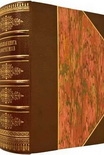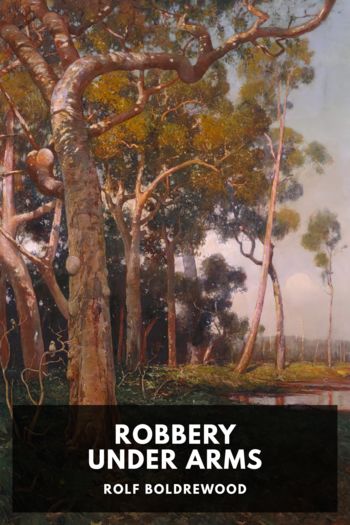A Chance to Die Elisabeth Elliot (electronic reader .txt) 📖

- Author: Elisabeth Elliot
Book online «A Chance to Die Elisabeth Elliot (electronic reader .txt) 📖». Author Elisabeth Elliot
Facing you as you come in are three big windows looking out on greenness where a pair of blue kingfishers continually fish for minnows in large vessels set under the trees.
The visitor today finds a mounted tiger head on the left wall of the entrance corridor, then a picture of a snow-capped mountain, painted by her friend Dr. Somervell, who had climbed high on Everest. Then a pendulum clock and something that certainly was never there in her lifetime, one of the rare photos of her. There is a little room off to the left where the precious logbooks are kept, then a door opening onto the verandah with its nearly zoo-size birdcage which she used to fill with brightly colored birds. Bougainvillea in shades of pink, purple, and salmon, and scented white jasmine grow up the pillars of the verandah. Her writing table stands before the three unglazed windows. The teakwood partition makes a dressing room which leads to the private bath, still with its primitive stone fixtures. Over the mirror are the words SERVANT OF ALL.
The Room of Peace.
As she had put up texts in her cabin on shipboard and her rooms in Japan, China, and Ceylon, she put up texts in the Room of Peace. A very large one reads, GOOD AND ACCEPTABLE AND PERFECT.1 On three separate plaques, hung together, are the words I KNOW, FEAR NOT, ASK HIM. There is a quotation from the Confessions of Saint Augustine, “By one who loveth is another kindled.” On a wood cabinet are painted blue letters, “A purpose sustained Thou wilt guard. Then He said unto me, Fear not. Despairing of no man.” The largest textboard of all says GOD HATH NOT GIVEN US THE SPIRIT OF FEAR.
The bookcases have been reorganized by now. One of them holds her favorites, which include The Cloud of Unknowing, The Spirit of St. Francis de Sales, Little Flowers of St. Francis, The English Liturgy, William Penn’s No Cross, No Crown, Richard Rolle’s Book of the Lover and the Beloved, Francis Paget’s Spirit of Discipline, Hymns of Tersteegen and Others, Companions of the Way, The Oxford Book of Mystical Verse, St. John of the Cross’s Spirit of Flame, Bishop Handley Moule’s The School of Suffering, Brother Lawrence’s The Practice of the Presence of God, and books by Evelyn Underhill, Julian of Norwich, Père Didon, and many others.
While old books were to Amy “wells,” from which she drew cold, pure refreshment, modern books were often “sawdust,” “thin,” “skimmed milk and tepid tea.” With more time to read than she had had in Bangalore when she declined Aunt Annie’s offer of novels, she loved those of John Buchan, “clean as sea wind,” which carried her far from her surroundings.
Amma’s complete healing was taken almost for granted at first. The injuries, after all, were not serious in themselves. For months after the accident the logbook meticulously followed her progress. “Amma walked six steps,” “Amma walked ten steps,” “A. carried to prayer room for meeting,” “A. stood for short spells,” “went for a drive,” “first night without pain.” In August 1932, it notes, “A. walked out to verandah quite well,” and on December 4, “walked down steps into Prayer Room. . . . Almost too much JOY. We sang ‘Praise God from whom all blessings flow.’ We thank Him who promised us this.”
Again and again the expected recovery appeared to have been given. Again and again hopes were dashed. When cystitis struck, the whole Family (not informed, of course, of the nature of the infection) gave itself to prayer, dividing the day into fifteen-minute watches, cabling to England and Australia (without Amma’s knowledge) for prayer help. Help came. Then healing. But it was only a reprieve, not a pardon.
She began to write letters to the ill, in pencil, a little at a time, from her bed. Then they were typed up and “looked like a book,” which became Rose from Brier, a book written not, as most books for the ill are written, by the well to the ill, but by the ill to the ill, “a rose plucked straight from a brier.”
The toad beneath the harrow knows
Exactly where each tooth-point goes;
The butterfly upon the road
Preaches contentment to that toad.
Amy had often been that toad, and had found it hard to be grateful to the butterflies, even when they came “dressed like very good Christians.” So she wrote the letters “before the sharpness of the prod of a single tooth” was forgotten. She had spent hundreds of days and nights under “the awful trampling power of pain” before she let that book go.
It seems inexplicable now, when patients are hounded out of bed and mercilessly exercised immediately after surgery, that an injury which seemed highly treatable should have resulted in her becoming a lifelong shut-in. It must be remembered that she had been a poor sleeper most of her life; physiotherapy was not available, the range of analgesic drugs was small. Perhaps she was overprotected. But she lived in a time when women were permitted to be invalids.
Amy was able to walk, though not without pain. Her “pain threshold” was very low. She could go to the bathroom, the verandah, occasionally the prayer room, and, whenever she wanted to during the first year or two, out for a drive in the Ford. “Such blissful drives. Godfrey used to bring his harp and two or three girls or Sitties came and we used to stop somewhere in view of the hills and they sang. It was heavenly. I often live in those evenings now,” she wrote in 1943, “the dear love of all was like the blueness of the sea. Once we went to Caruniapuram and picnicked under the hills.”
Neuritis took hold. Electrical treatment “played games with it,” and her left hand was deformed for a while. Twice she





Comments (0)